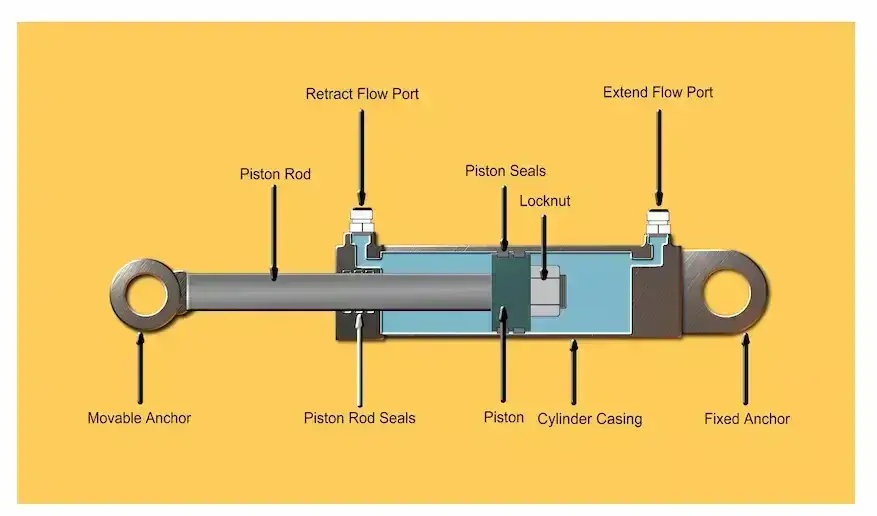Hydraulic Cylinder Angle Calculator
Calculate the angle of hydraulic cylinders based on their positions and dimensions
Calculation Result
Frequently Asked Questions
What is a hydraulic cylinder angle calculator?
A hydraulic cylinder angle calculator helps determine the angle of a hydraulic cylinder relative to its mounting points based on the cylinder’s length, extended length, and mounting distance.
Why is calculating hydraulic cylinder angle important?
Calculating the angle is crucial for proper system design, ensuring optimal force transmission, preventing binding, and maintaining system efficiency.
What are the key parameters needed for calculation?
You need three main parameters: cylinder length (retracted length), extended length, and the distance between mounting points.
A hydraulic cylinder angle calculator is used to determine the force, pressure, or piston area when a hydraulic cylinder is used at an angle. It helps account for the cosine of the angle between the cylinder and the direction of the force being applied, which affects the effective force exerted by the cylinder.
How it works:
- 1. Angle Input:The calculator requires the angle at which the cylinder is positioned relative to the direction of the desired force. This angle is typically measured between the cylinder’s centerline and the line of action of the force.
- 2. Input Parameters:You’ll need to input other relevant parameters such as:
- Cylinder Bore Diameter: The inner diameter of the cylinder’s barrel.
- Rod Diameter (if applicable): The diameter of the piston rod.
- System Pressure: The pressure of the hydraulic fluid.
- Desired Force or Piston Area: Depending on the calculation, you might input the force you need to achieve or the desired piston area.
- 3. Calculations:The calculator then uses trigonometric functions (specifically the cosine of the angle) to determine the effective force or piston area in the desired direction.
- 4. Output:The calculator provides the calculated values, allowing you to determine the required cylinder size, pressure, or force for your application.

Example:
If a hydraulic cylinder is used at a 30-degree angle, the effective force in the desired direction will be less than if the cylinder were used directly in line with the force. The calculator helps determine the necessary adjustments to ensure the desired force is achieved.
Key Formulas:
- Effective Force: F_effective = F * cos(angle)
- Piston Area: A = (π * d^2) / 4 (where d is the bore diameter)
Applications:
Hydraulic cylinder angle calculators are used in various applications, including:
- Construction Equipment:Excavators, loaders, and other heavy machinery often use angled cylinders for lifting and positioning.
- Industrial Machinery:Automated systems, robotic arms, and other machinery that require precise movement at angles.
- Aircraft Landing Gear:Hydraulic cylinders are used to extend and retract landing gear, and angle calculations are essential for proper design.
- Material Handling:Cranes, hoists, and other material handling equipment may use angled cylinders for lifting and positioning loads.
By using an angle calculator, engineers and technicians can ensure that hydraulic cylinders are properly sized and configured to deliver the required force and motion, even when operating at angles.